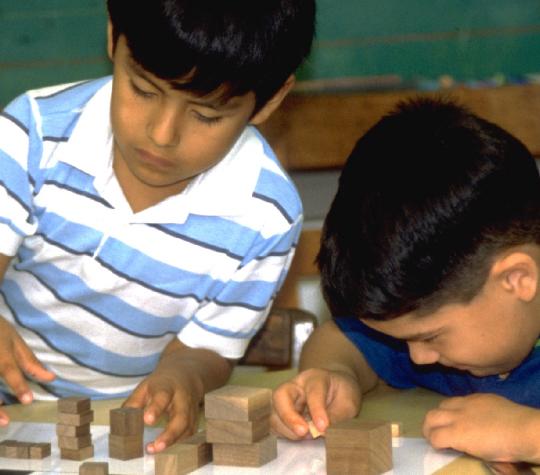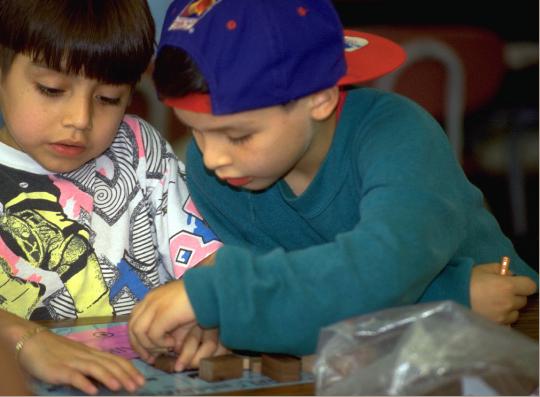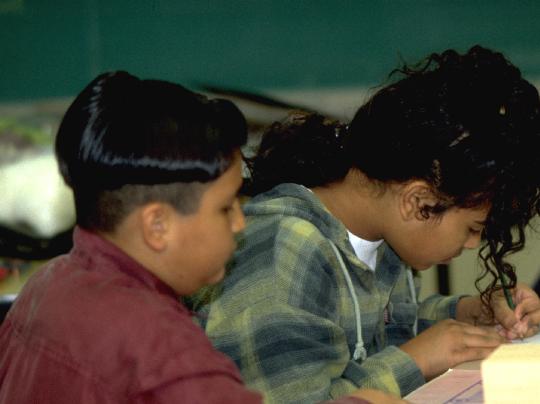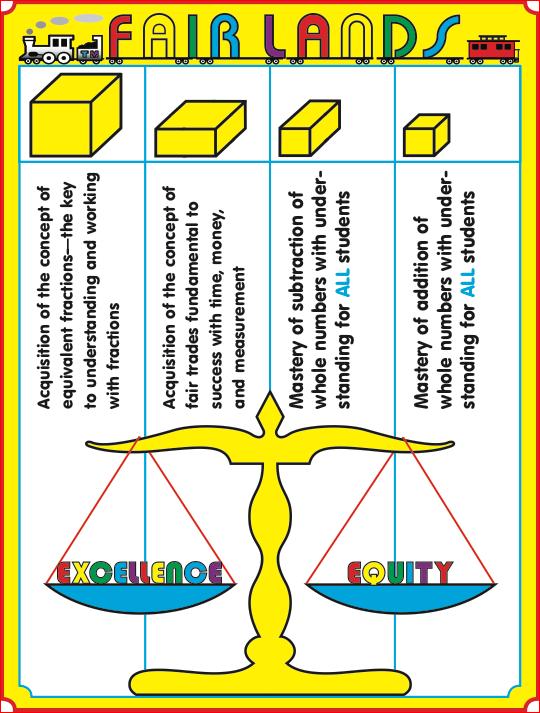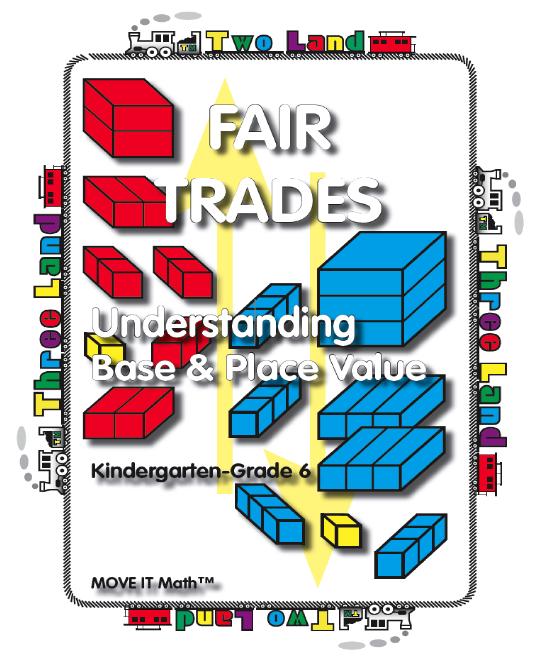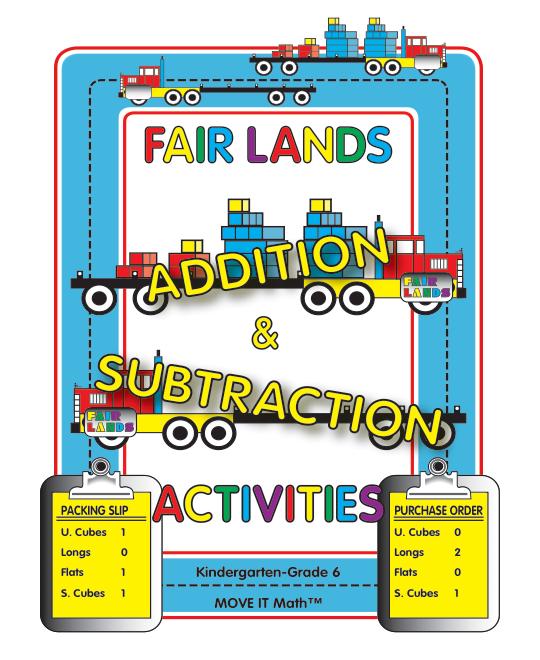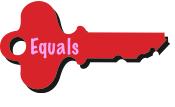 |
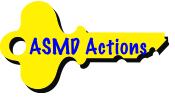 |
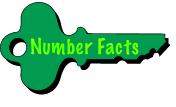 |
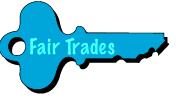 |
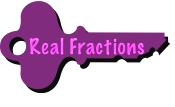 |
||||||||||
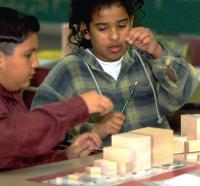 |
||||||||||
 |
||||||||||
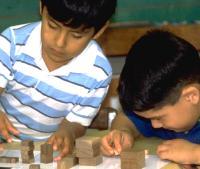 |
||||||||||
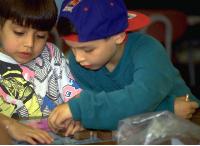 |
||||||||||
Our Children Have Fallen Behind
International testing conducted by TIMSS (Trends in International Mathe-matics and Science Study) every 4 years has long revealed that American students are generally outscored in math and science by students in other industrialized nations. Results for math from 1995, 1999, and 2003 basically ranked America’s 4th graders in the middle, its 8th graders in the bottom third, and its high school students plus its top 5 percent in all three grades at or near the bottom! Although the math results for 2007 show a slightly better picture, comparisons with Asian countries, particularly China, are still cause for alarm. A realistic assessment of the situation is that many of America’s students are currently destined to finish school unprepared to compete for jobs and opportunities in this era of globalization.
The marginal performance of American students in math and science humiliates the students, worries their families, and could cost the nation (not billion) over the next 80 years. What is in store for these students in a country with a diminishing array of non-technical jobs due to monumental advances in technology? How will they manage to provide for themselves when the good paying jobs are increasingly filled with their peers from other countries who, according to Bill Gates, CEO of Microsoft, “know how to multiply.” Is reform close at hand? Will it reach them in time?
What Our Children Need to Know
This key is about the arithmetic our children need to know, in particular, “how to multiply” and add, subtract, and divide. To perform these operations with understanding requires knowing one of humankind’s greatest intellectual achievements: place value numeration—assigning value to a digit by multiplying it by a power of some number based on the digit’s “place” or position in a numeral.
Place value numeration did for numbers what the alphabet did for words: It simplified writing them, particularly big ones, and hugely facilitated computation. Place value numeration systems have uncompromisingly replaced all other numeration systems and become a cornerstone of modern society worldwide. The base 2 (binary) system is the architecture of digital computers, and the base 10 (decimal) system is the nucleus of science, a scorekeeper in business, and an intellectual tool in everyday living.
Fair Trades — a New Way of Thinking
Computing in base 10 is a matter of making and recording “fair trades” where ten things the same are exchanged for one of the next bigger thing or vice versa. This is alluded to in the familiar refrain “ten 1s make a 10, ten 10s make a 100, ten 100s make a 1,000.” In ALL KIDS CAN LEARN ARITHMETIC, making and recording fair trades is modeled with specially designed blocks in a place called Fair Lands™ that is governed by rules that allow only a certain number of blocks to be the same. The blocks are trucked to and from Fair Lands™ in compliance with the rules, and the events are recorded as if they were business transactions.
In ALL KIDS CAN LEARN ARITHMETIC, if computing in base 10, you are said to be in Ten Land. The reason base 10 arithmetic is called a land in MOVE IT Math™ is because it is a place of law and order. Fortunately, there is only one law: “Never have ten or more the same.” So in the event of ten or more the same, a fair trade must be made. For example, 8+7 yields fifteen the same, which is in violation of the law, so ten of the same are traded for the next bigger thing, resulting in the numeral 15. This is why 15 is written the way it is. The 1 to the left of 5 is the convention for showing that one trade was made, and the 5 is the number of leftovers. That the 1 and 5 are referred to as “one 10” and “five 1s,” respec-tively, is irrelevant in computation. What matters is that the result shows that the “law of the land” was not broken: that ten the same were traded for the next bigger thing.
YouTube video: (2:58)
YouTube video: (3:28)
A Fair Trade is Just That, NOT “Regrouping” or “Renaming”
It is customary to refer to making fair trades in arithmetic as “regrouping” or “renaming” — words that replaced “borrow” and “carry” that were used decades ago. The problem with “borrow” was that we do not pay back, and the problem with “carry” was that we
CONTINUED: Next > | 1 | 2 | 3 | 4 | 5 | 6 | 7 | 8 | 9 | 10 | 11 | 12 | 13 | 14 | < Back
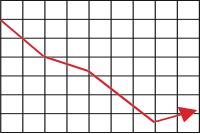
Importing & Exporting Activities in Fair Lands™ for Teaching Addition & Subtraction
Over 100 directed activities on importing (adding) and exporting (subtracting) in different bases using the Fair Lands™ (base 2 and base 3) blocks, Ten Land (base 10) blocks, and counters. Objective is understanding addition and subtraction in a place value numeration system.
Models addition as fair trades “up” by requiring that so many of one thing all the same must be traded for one of the next bigger thing. Models subtraction as fair trades “down” by requiring the opposite. In making fair trades up and down, students learn the essence of how numbers are added and subtracted in a place value numeration system.
Grades 1-6, 108 pages. Best used over several grades.
Available only from this website.
Fair Lands™ QUICK START
Tutorial on Fair Trades Up, Fair Trades Down, and importing (adding) and exporting (subtracting) in Two Land (base 2), Three Land (base 3), and Ten Land (base 10). If a picture is worth a thousand words, this little booklet is worth a dictionary. No wordy lectures. Everything explained with pictures of blocks on activity boards. Lots of examples of recording after a trade.
FREE e-book! Download only from this website.
Fair Trades: Understanding Base & Place Value
Activities on making Fair Trades Up (a readiness game for adding) and Fair Trades Down (a readiness game for subtracting) in different “lands.” When students can make fair trades up or down in any land with or without blocks or counters, they will have learned that the number determining a fair trade in a land is the base of the land. Adding and subtracting in base ten arithmetic then become meaningful. Adding is just Fair Trades Up in Ten Land where ten things the same must be traded for one of the next bigger thing, and subtracting is just Fair Trades Down in Ten Land where something is traded for ten of the next smaller things.
Students encounter lots of different lands in daily living. They need to learn to account for that when working in those lands. For example, 2 feet, 9 inches + 9 inches (in Twelve Land) = 3 feet, 6 inches, not 3 feet, 8 inches, and 3 weeks, 1 day less 6 days (in Seven Land) = 2 weeks, 2 days, not 2 weeks, 5 days.
Grades K-6, 109 pages. Best used over several grades.
Available only from this website.
